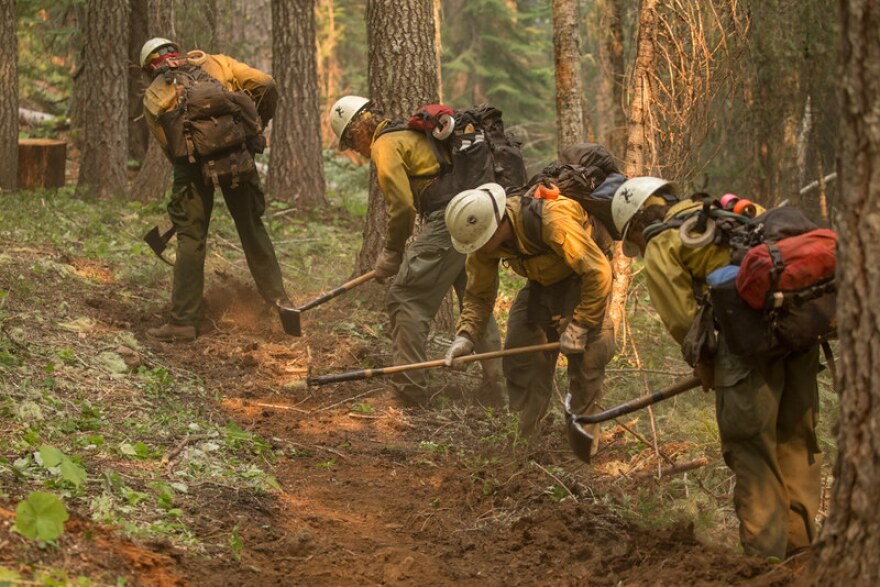Many in the West know that wildland firefighting is tough. But researchers who study the physiology of the work point to some of the world’s highest performing athletes for comparison.
Brent Ruby is the director of the University of Montana’s Center for Work Physiology and Exercise Metabolism, and has spent much of his career studying the physical demands of wildland firefighting.
In a recent , he pointed to Tour de France cyclists as a useful analogy.
“The energy expenditure in fire varies depending on the assignment, of course, but anywhere from about [4,000] to 6,000 plus calories per day energy expenditure,” he said. “Now the Tour is closer to [6,000], sometimes a little bit higher, but they're not working for 14, 16-plus hours a day. So, the intensity of work in the Tour is quite a bit higher on a shorter term pace, but nonetheless, the overall energy demand is you can draw that parallel.”
In an April journal , he and colleagues summarized research on wildland fire physiology. Ruby likened the publication to “the Ikea of research papers for all things wildland fire physiology.”
They also made recommendations for improving firefighter health and nutrition, like increasing “carbohydrate-rich” snacks throughout shifts. Ruby noted that fire agencies have recently been taking steps to improve food options for firefighters.
“We know how to feed people better, we know when to feed them during the shift, and we know what to feed them,” Ruby said. “If people aren't paying attention to that, they're going to fall short.”
This story was produced by the Mountain West News Bureau, a collaboration between Wyoming Public Media, Nevada Public Radio, Boise State Public Radio in Idaho, KUNR in Nevada, ������٠in Colorado and KANW in New Mexico, with support from affiliate stations across the region. Funding for the Mountain West News Bureau is provided in part by the .



